Anatomy of the Orbit
1/14
There's no tags or description
Looks like no tags are added yet.
Name | Mastery | Learn | Test | Matching | Spaced |
|---|
No study sessions yet.
15 Terms
How many axes of motion does the eye have? 3 rotational axes, which is 6 directions
Axes of Motion
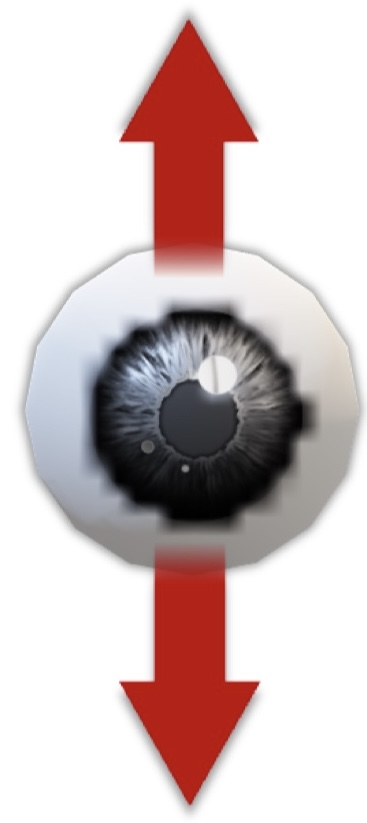
Vertical Movement (around transverse axis)
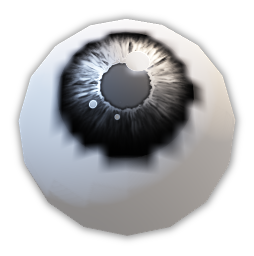
Elevation
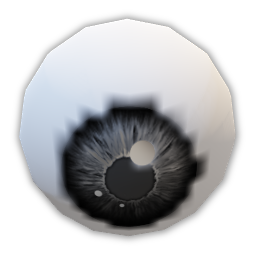
Depression
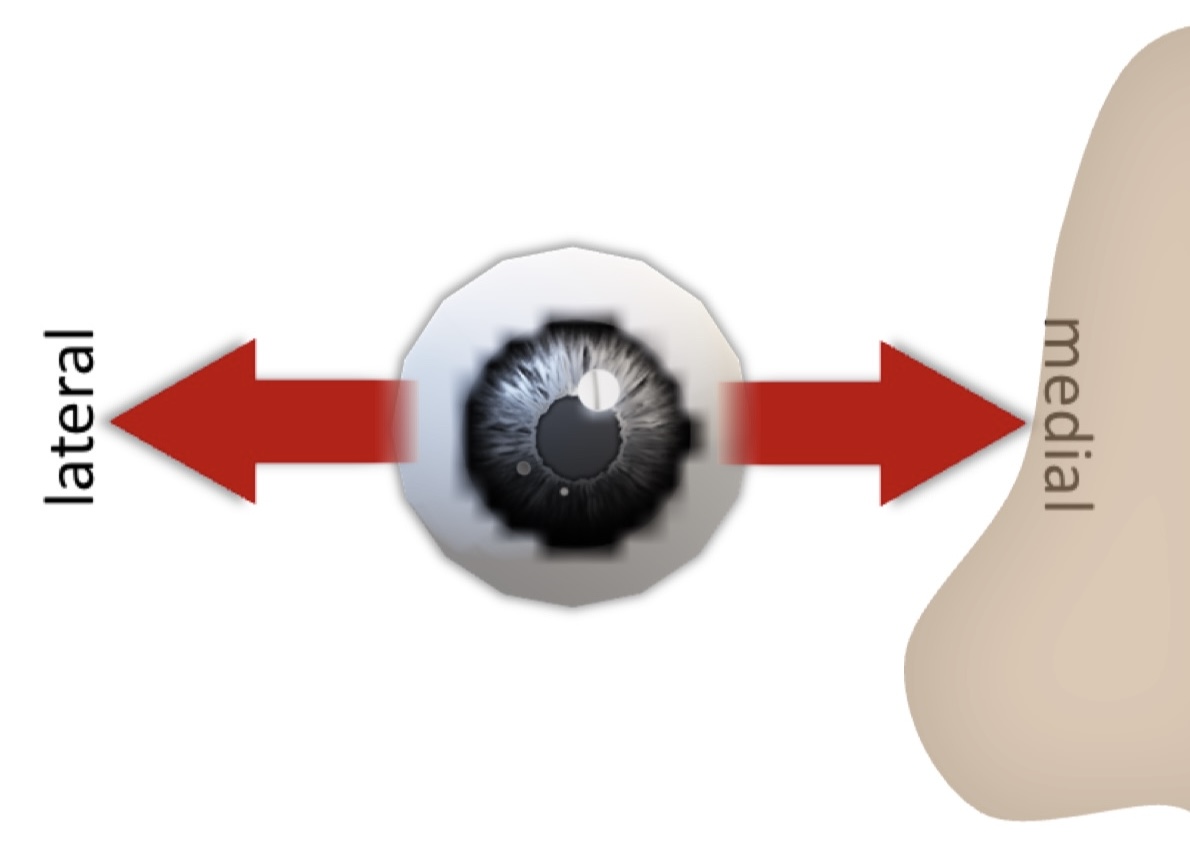
Horizontal Movement (around vertical axis)
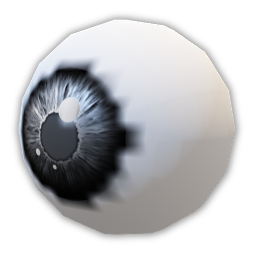
abduction (move eyes away from the nose)
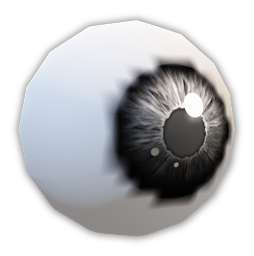
adduction (move eyes towards the nose)

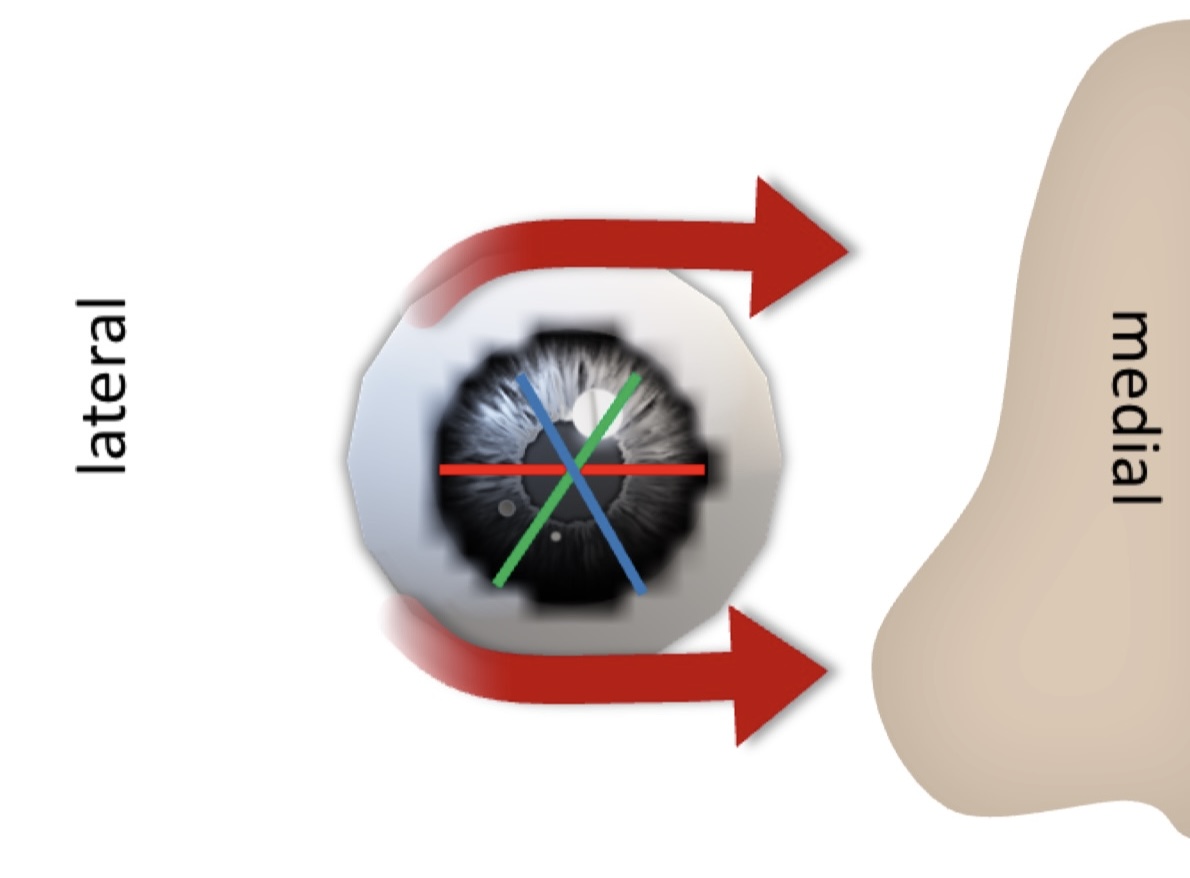
CW/CCW Movement (around AP axis)
*when you tilt your head, your eyes tries to follow

lateral rotation (extorsion)
*move eyes away from the nose
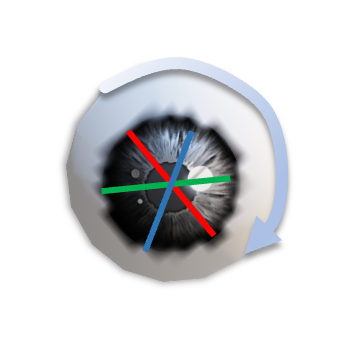
medial rotation (intorsion)
*move eyes towards the nose

Superior Rectus
Elevates the gaze
Intuitive action of extra-ocular muscles
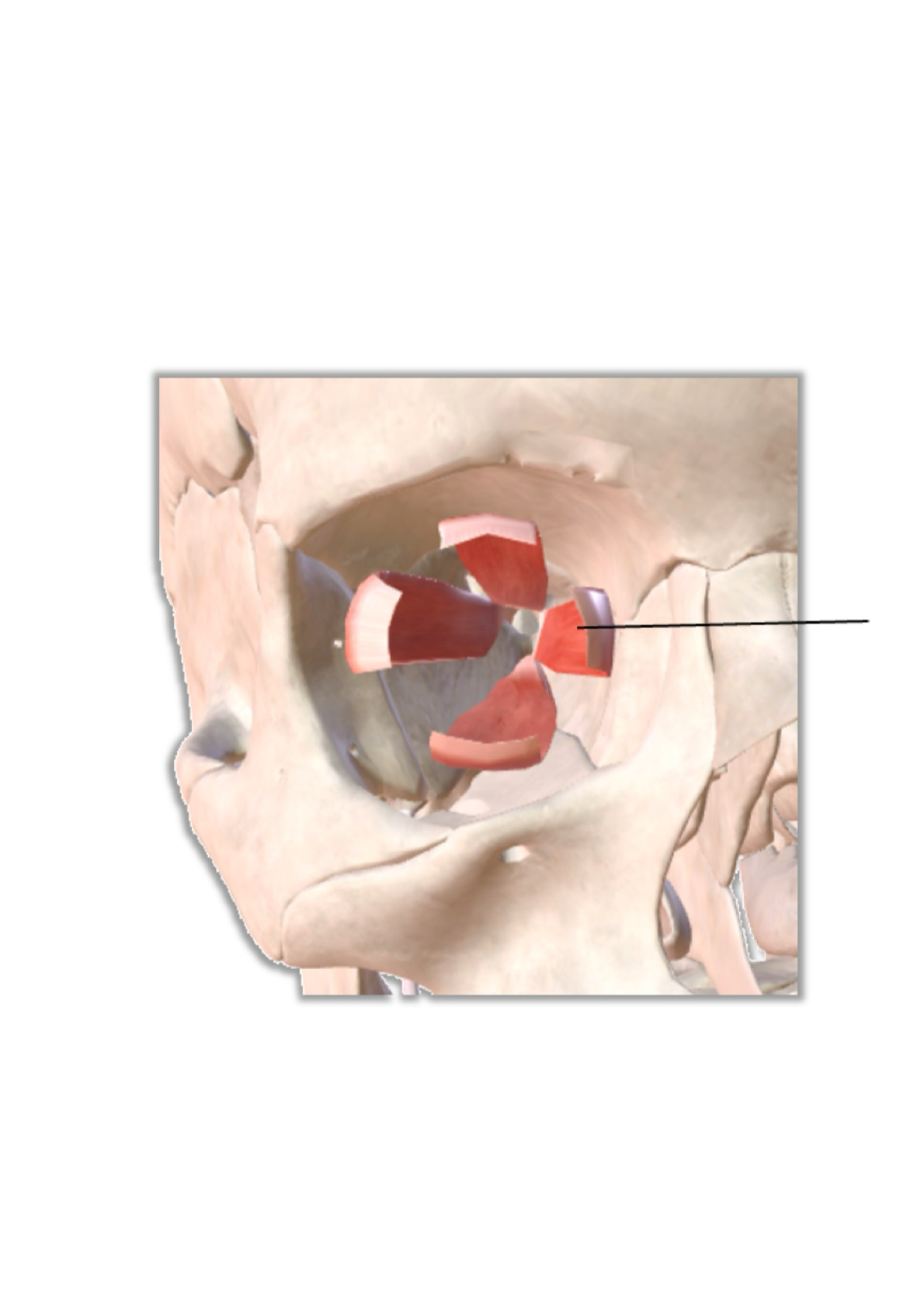
Medial Rectus
Adducts the gaze
Intuitive action of extra-ocular muscles

Inferior Rectus
Depresses the gaze
Intuitive action of extra-ocular muscles
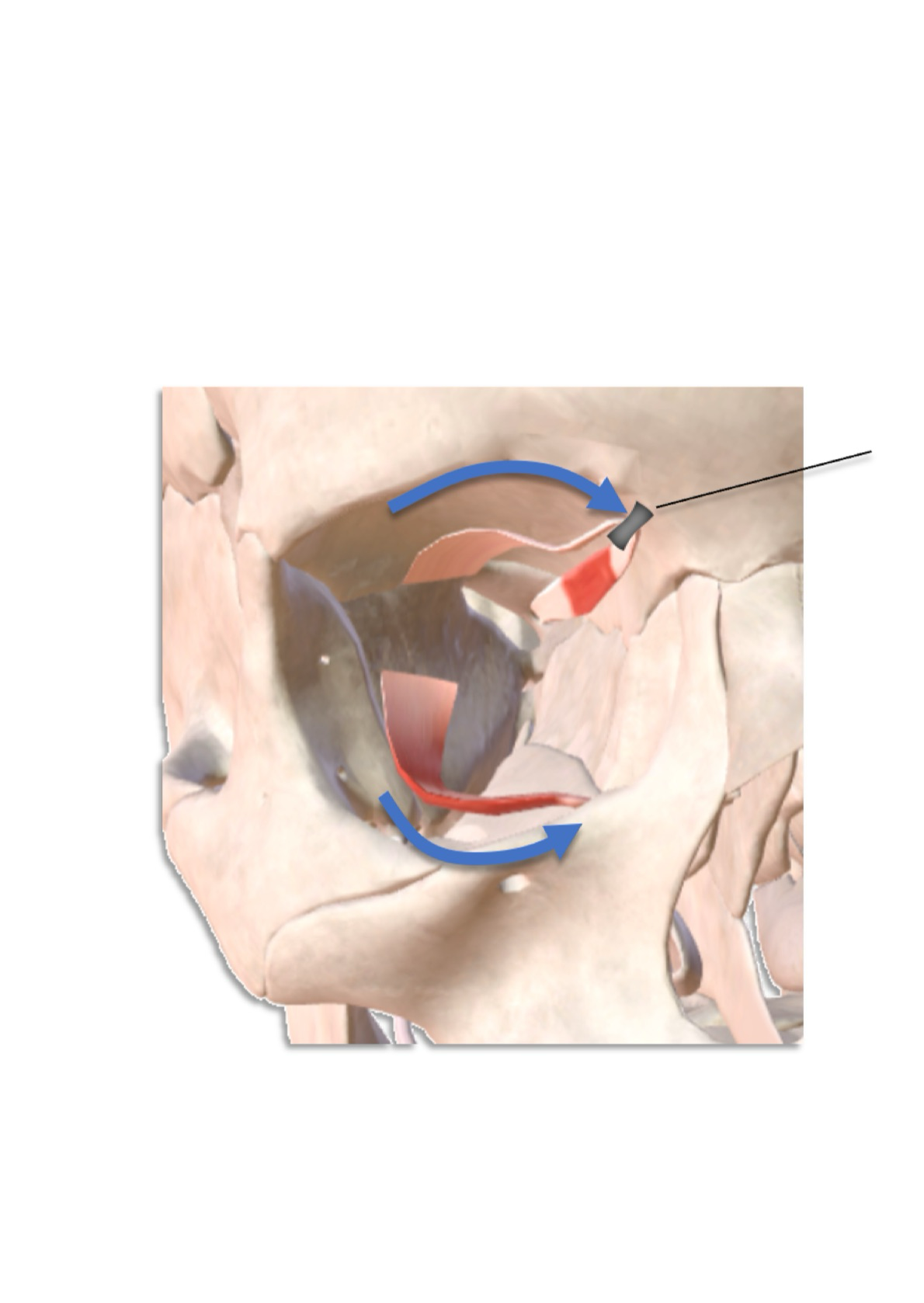
Medial and Lateral rotations (CW, CCW)
Trochlea
Pulley for tendon of superior oblique
Intuitive action of extra-ocular muscles

Superior Oblique
Medially rotates gaze (intorsion)
Depress gaze
Abduct gaze
Intuitive action of extra-ocular muscles

Inferior Oblique
Laterally rotates gaze (extorsion)
Elevates gaze
Abduct gaze
Intuitive action of extra-ocular muscles

Lacrimal Gland
Produces lacrimal fluid (tears)
Lacrimal Apparatus

Lacrimal Ducts
Transfer fluid to conjunctiva
Lacrimal Apparatus
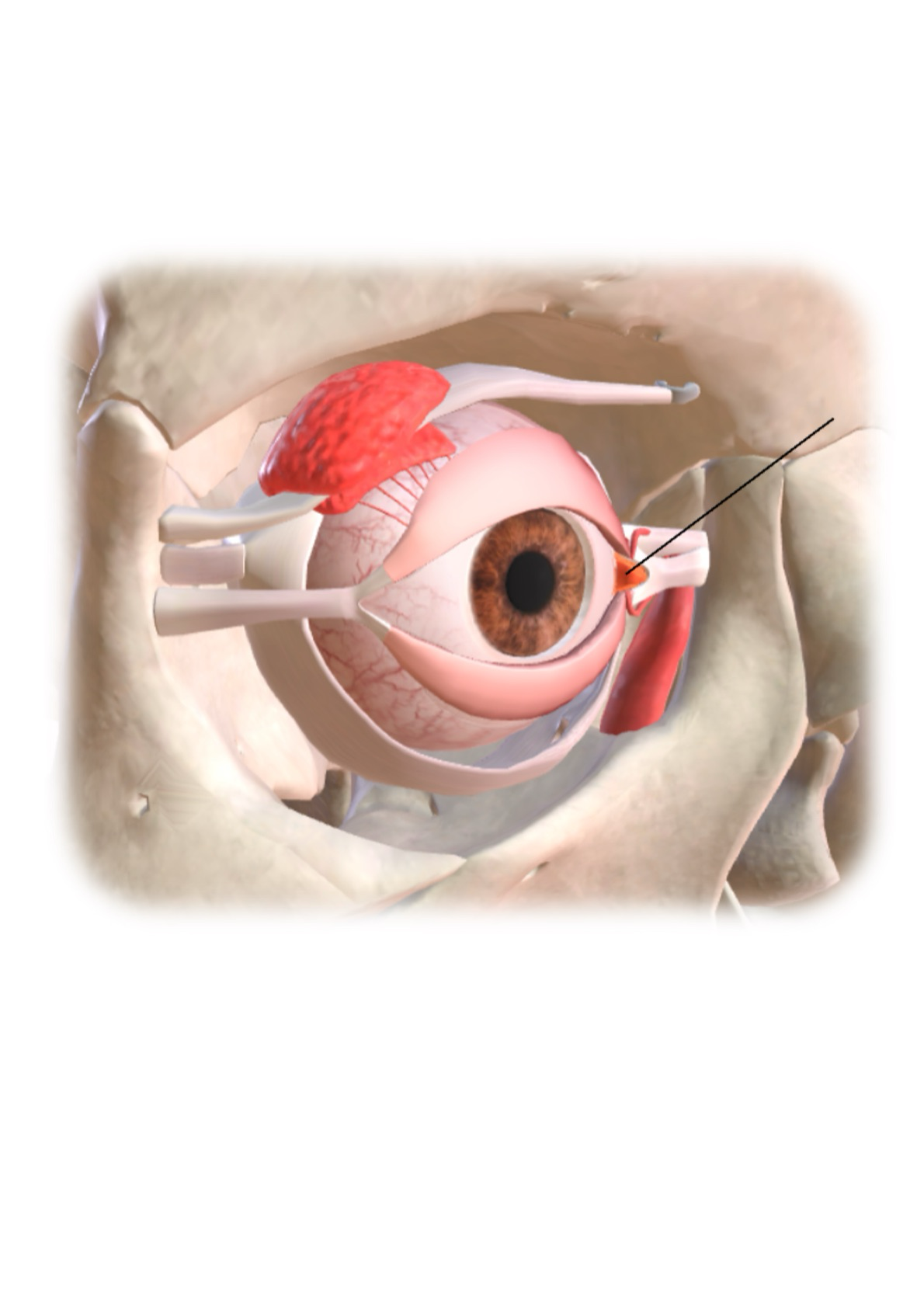
Lacrimal Caruncle
Tissue in corner of eye helps to form lacrimal lake & a funnel
Lacrimal Apparatus
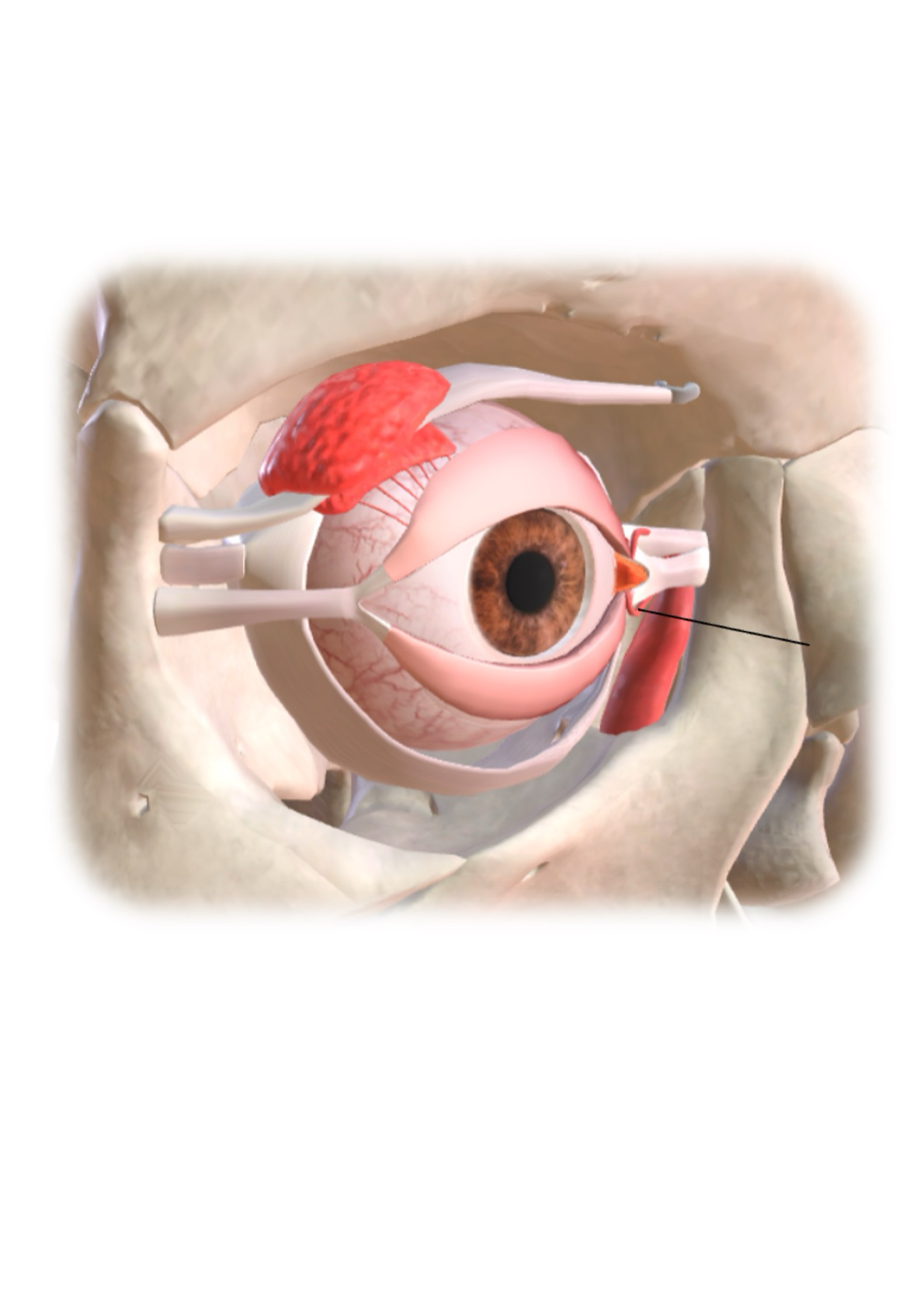
Lacrimal Canaliculi (S & I)
Small canals that drain lacrimal lake into lacrimal sac
Lacrimal Apparatus
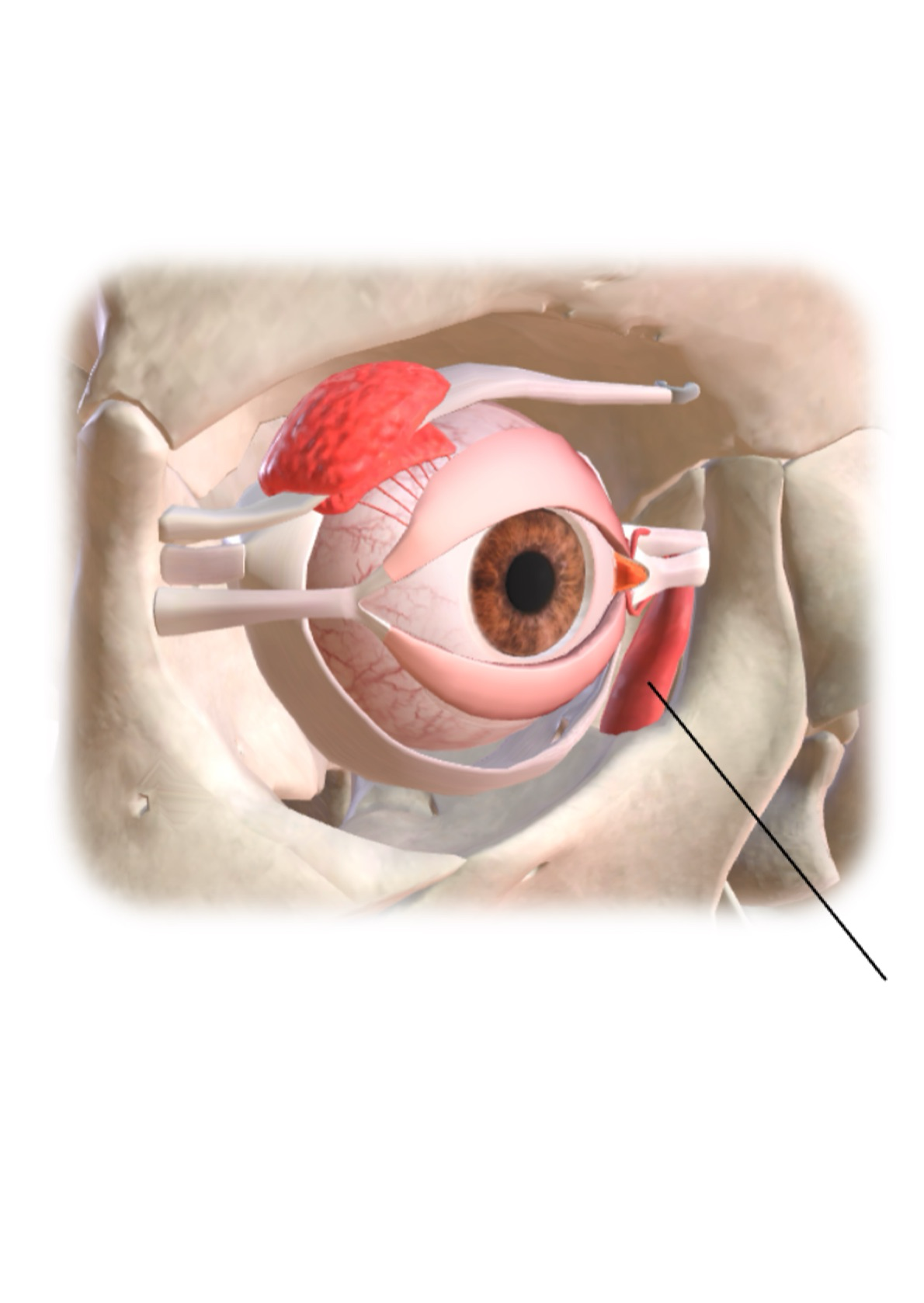
Lacrimal Sac
Bag-like upper portion of nasolacrimal duct that conveys fluid from eye to nasal cavity
Lacrimal Apparatus